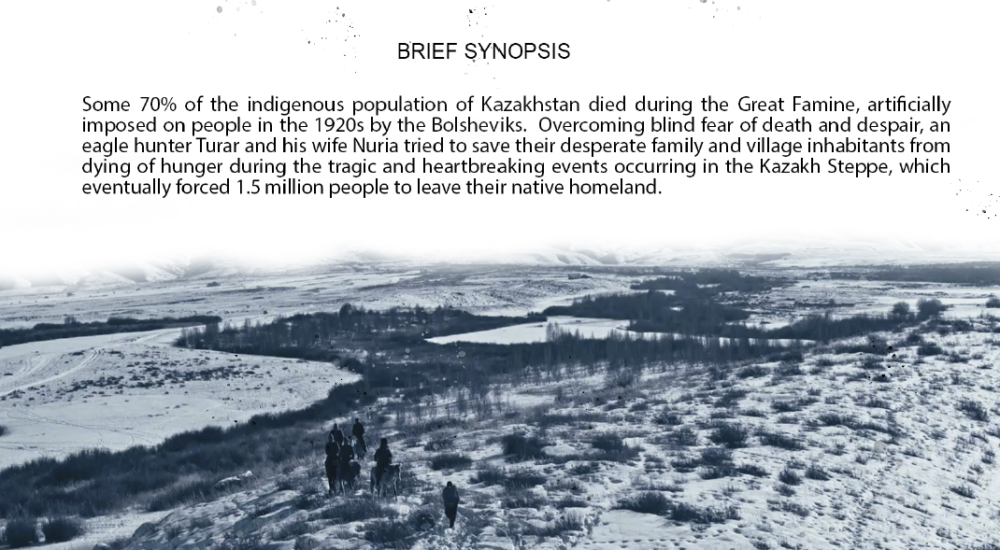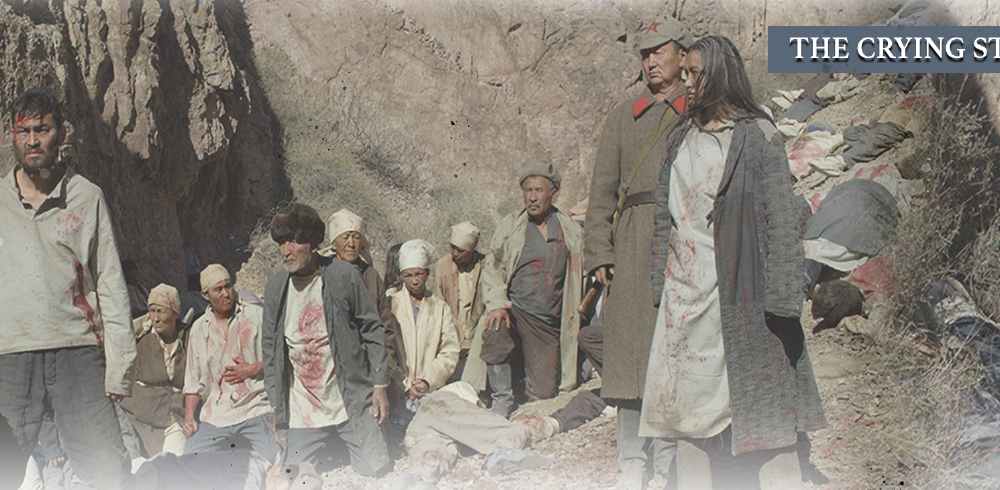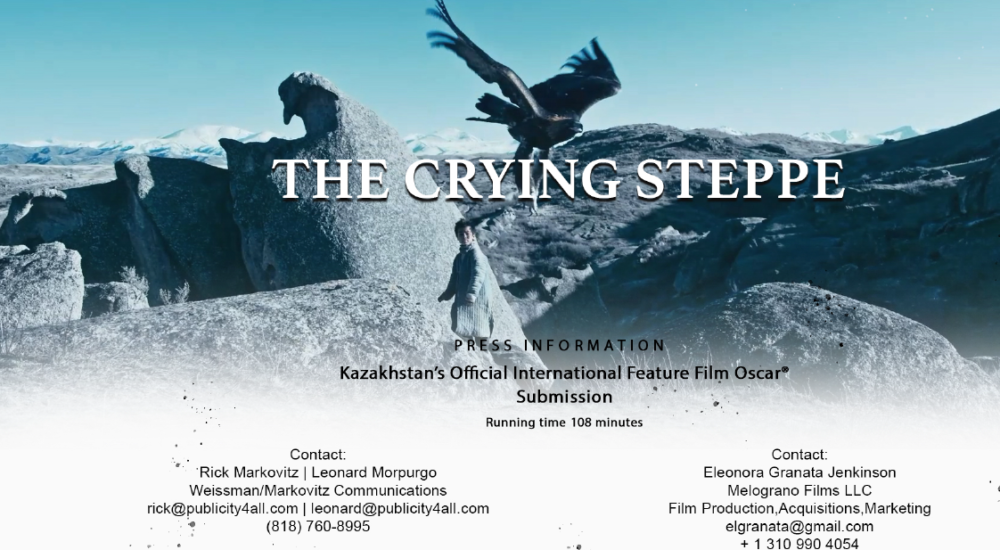Marina Kunarova, the first Kazakh female director candidate to the Oscars
Kunarova is an alumna of the EWA Network Multiple Revenue Stream Training course, where this film was developed. The Crying Steppe is her third directorial feature after 2010’s 999 and 2014’s Hunting The Phantom; Currently, she is developing an action feature titled Kill Tarantino.
We are ecstatic to see Marina Kunarova's film on its way to the Oscars.
"70% of indigenous population of Kazakhstan died during the Great Famine, artificially imposed on people in the 1920s by the Bolsheviks. Overcoming blind fear of death and despair, an eagle hunter Turar tries to save his family. "


The Director

Marina Kunarova began working in the film industry when she was 17. She started as a clapper loader and worked her way up, eventually becoming a film director and scriptwriter. She has worked with films in different genres; however, her favorite is definitely action. Most of her filmmaking skills come from working on sets. She has also attended several filmmaking and scriptwriting workshops and seminars around the world. But she believes that practice is the best way to learn and improve your skills.
Filmography as a Director:
2010: 999 (director, scriptwriter)
Kurdastar TV serial (director, scriptwriter);
2014: Hunting the Phantom feature film (director, scriptwriter)
2017: Like a men TV serial (director, scriptwriter);
2017: The Reporter (director, scriptwriter)
2015-2020 The Crying Steppe (director, scriptwriter)
2020: Years of Joy and love feature film (director, scriptwriter)

It is quite astonishing that little is known in the West about one of the most horrendous acts of cruelty in modern history. In the 1920s and 30s some eight million Kazakhs, 70% of the nation’s population, were killed through systemic starvation by Stalin’s Soviet Union. This exceeds the Jewish Holocaust which came just half-a-dozen years later. Writer and director Marina Kunarova turns her camera’s light on this obscure devastation in her film The Crying Steppe.
It was known as the Goloshchyokin genocide, named after the man most responsible, Filipp Goloshchyokin. He was a founding member of the Russian Communist Party, leader of those who killed Tzar Nicolas II and other members of the Romanov Family, and the head of the Sovietization of Kazakhstan. He got his comeuppance when his protector, Nikoli Yezhov, head of the NKVD, was executed in 1937. Goloshchyokin was arrested two years later and executed without trial by the NKVD in 1941.
But that was too late for the millions of Kazakh victims. They were considered inferior by the Bolsheviks, who took their cattle and cereal to be used in the cities. The Soviet government confiscated food and livestock from the Kazakhs in order to buy weapons. With these exact weapons, the Bolsheviks suppressed uprisings. More than 300 uprisings took place in Kazakhstan in just one year under Soviet ruling. The Soviet authorities undertook a campaign of persecution against the nomad Kazakhs, believing that the destruction of the class was a worthy sacrifice for the collectivization of Kazakhstan. Hunger was a tool for suppressing the freedom of the people, invented by the Soviet government specifically for those people who resisted the Soviet regime.
This is the first time a feature film has ever accurately depicted one of the most catastrophic periods in the history of Kazakhstan, events which have been kept a secret from the world until now. At a time when wheat grains were more expensive than human life, the Holodomor "Murder by Hunger" affected many of the Soviet Union republics, including Kazakhstan, Ukraine, Bashkiria, Tatarstan, Chechnya, Azerbaijan, Armenia etc, with over 47 million Soviet people suffering death or severe, acute malnutrition during the ten years of famine.
The hunger was so great that a few took to cannibalism. Others were so weak that they could not fight off, nor run from hungry packs of wolves. But some did manage to escape with their cattle to neighboring countries.
In the 1920s, despite the difficult circumstances during those years of famine, the USA, the American Relief Administration (ARA), the American Jewish Joint Distribution Committee (JDC) and the European countries tried to get the humanitarian help to the starving people on the territory of the Soviet Union. More than 15 million lives were saved from starvation death.
Even in Kazakhstan itself people and the government today try not to talk about it, think about it, remember it. In fact, it was not until 1990 that Kazakhs once more became the majority in their own country.

Esenya Antheia, also alumna of EWA Network's MRST has worked in The Crying Steppe as creative producer and the second unit director.
The film is a Kazakh production however, European producers such as Eleonora Granata, Birgit Gernböck and Angelika Schouler have been attached to the project.

